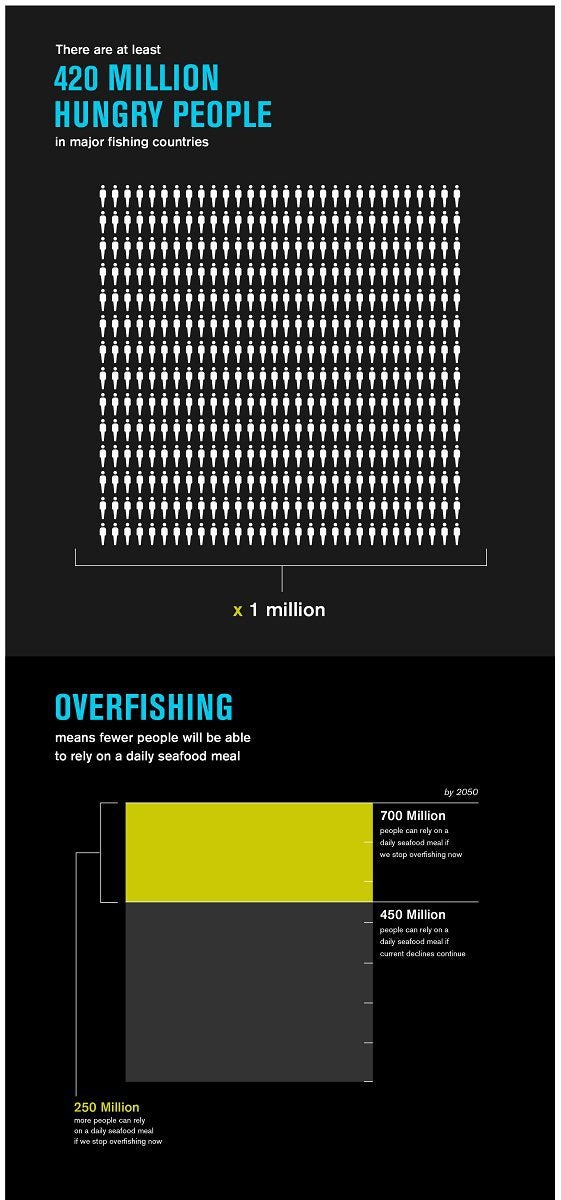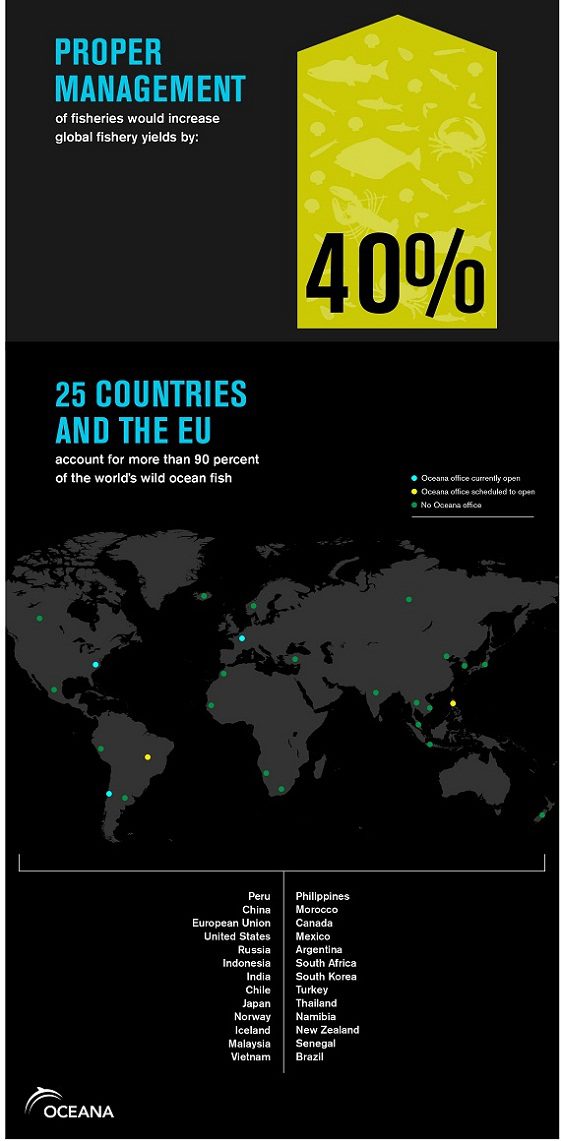February 3, 2014
Bloomberg by the Numbers: How Boosting Fish Populations Can Feed the World
BY: Suzie Hodges
We’ve been talking a lot this week about Vibrant Oceans, former New York mayor Michael Bloomberg’s initiative. We’ve talked about our plan to work alongside Rare & EKO Asset Management to reform international fisheries management and to rebuild fish populations around the world. But we also need to discuss an equally important reason why this commitment is truly historic. By reforming international fisheries, the Vibrant Oceans initiative tackles an issue that affects not only the state of our oceans, but us. People. People everywhere. Why do we need to change the way the world catches fish? The answer’s in the data. Here’s a quick breakdown:
The issue? Currently, only 13 percent of our oceans are protected from overfishing.
How do we know that overfishing is a problem? The demand for fish is outpacing the ocean’s supply. The amount of fish caught worldwide has already peaked, that time came and went in the 1990s. Since then, the amount (and size) of fish caught has declined by nearly 8 percent, even though both industrial and coastal fishers are working harder and are using more advanced technologies.
So how does this affect people around the world? There are 420 million hungry people in major fishing countries. Three billion people rely on fish for food and income. The demand for fish is expected to rise by at least 20 percent by 2030. We need more fish, and the oceans are struggling to keep up.
That’s where international fisheries reform comes in. Bloomberg’s initiative is the first and largest program to promote sustainable fishing reforms in Brazil, the Philippines, and Chile, which account for 7 percent of the fish caught worldwide each year. It’s also the first to tackle both local and industrial fishing practices in a country at the same time. If we stop overfishing now, by 2050, we can feed 250 million more people a seafood meal each day.
That’s a lot of scope to consider. We needed to grab hold of a better sense of the impact of rebuilding the global fish supply, not only in terms of saving the oceans themselves, but also in the impacts for everyone that eats or relies on seafood. To grasp the fish-to-people effect at the crux of the Vibrant Oceans initiative, we created a handy infographic. Check out the numbers for yourself—you may be surprised by the power of a simple plate of fish.


(Graphic: Oceana / Jenn Hueting)



